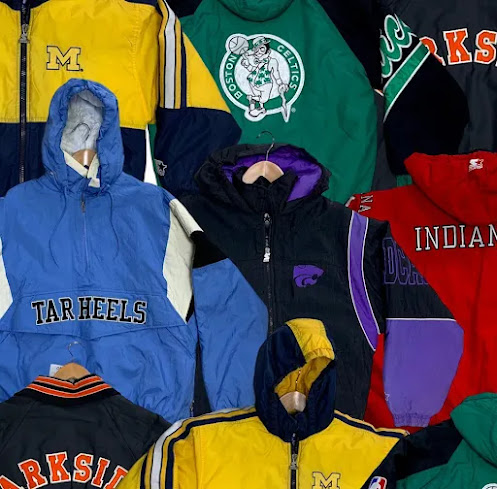How to Detect Fake Vintage Clothing: A Smart Guide for Retailers?
Why Authenticity in Vintage Fashion Matters
In the thriving world of retro fashion, offering authentic vintage pieces is no longer just a trend—it's a necessity. For retailers, especially those starting out, understanding how to distinguish genuine vintage apparel from imitations is vital. It builds your store’s reputation and earns long-term customer loyalty.
Partnering with trusted vintage clothes wholesalers can save you from the risk of ending up with fake items. In this guide, we’ll share key tips for identifying counterfeit pieces and ensuring that what you offer is truly vintage.
Signs of Real Vintage: What Retailers Should Look For
1. Fabric Quality and Material Insight
True vintage clothing is usually made with natural fibers like wool, cotton, or silk. These fabrics often feel heavier and more textured than today’s synthetic blends. In contrast, modern replicas may look similar but usually lack the durability and feel of genuine vintage materials.
Sourcing from experienced branded clothing wholesalers UK ensures you’re getting items crafted with that old-school attention to fabric quality.
2. Construction Techniques and Stitching
Older garments tend to be hand-stitched or constructed with more intricate detailing. Uniform stitching or lack of craftsmanship is often a tell-tale sign of mass production. Look out for older seam styles like pinking or French seams that are rarely used in fast fashion.
When buying wholesale mens clothing UK, always inspect for construction authenticity before stocking up.
3. Checking Labels and Tags
A garment’s label can reveal a lot about its origins. Vintage tags often include older logos, brand names, or even union-made stamps. If the label looks too modern or uses fonts and designs that don’t match the claimed era, that’s a red flag.
For retailers focusing on women's wholesale clothing UK, knowing how to read and verify tags is an essential skill.
4. Fastenings: Zippers and Buttons
Genuine vintage often features metal zippers or buttons made from natural materials like wood, bone, or brass. On the other hand, fake items tend to use plastic zippers and lightweight buttons that weren’t available or common in past decades.
If you’re working with kids clothes wholesale UK, examining these small details can help determine if the items are authentically vintage or modern imitations.
Understanding Fashion Eras Through Clothing Design
Each era had distinct fashion traits. Knowing these can help you identify the right decade of a piece, which is crucial in confirming authenticity.
1920s: Loose silhouettes, dropped waists
1950s: Fitted waists with full skirts
1970s: Flared pants and bohemian prints
1980s: Shoulder pads and bright colors
Study common patterns, stitching styles, and fabric prints to better understand which era the garment belongs to. This knowledge also helps you avoid investing in inaccurately marketed pieces.
How to Spot Fakes: Tricks You Need to Know
Reproductions vs. Replicas
Replicas are made to look old but are completely modern, while reproductions are remakes of older styles. Both can be confusing, but genuine vintage will show natural aging—fading, softness, or small imperfections that give it character.
Mismatched Details
Counterfeit pieces may look too perfect. If an item is labeled as 1960s but has a polyester tag or plastic zipper, it’s likely a fake. Details like incorrect fonts, new-looking tags, or misplaced stitching should be examined critically.
Extra Tools to Help You Authenticate Clothing
Tech Tools for Help
Apps and online tools are available to help authenticate fashion items. From image recognition to databases of label archives, these tools can give you quick insights on brand authenticity.
Professional Verification
Sometimes, a second opinion from a vintage clothing expert or appraisal agency can go a long way. These professionals can analyze the garment’s stitching, fabric, and age indicators for accurate verification.
Final Thoughts: Build Trust Through True Vintage
Being part of the vintage retail world means staying alert, informed, and careful about your inventory. Ensuring you source from reliable vintage clothes wholesalers and learn how to identify authentic items will protect your brand reputation and help your business thrive.


.png)

Comments
Post a Comment